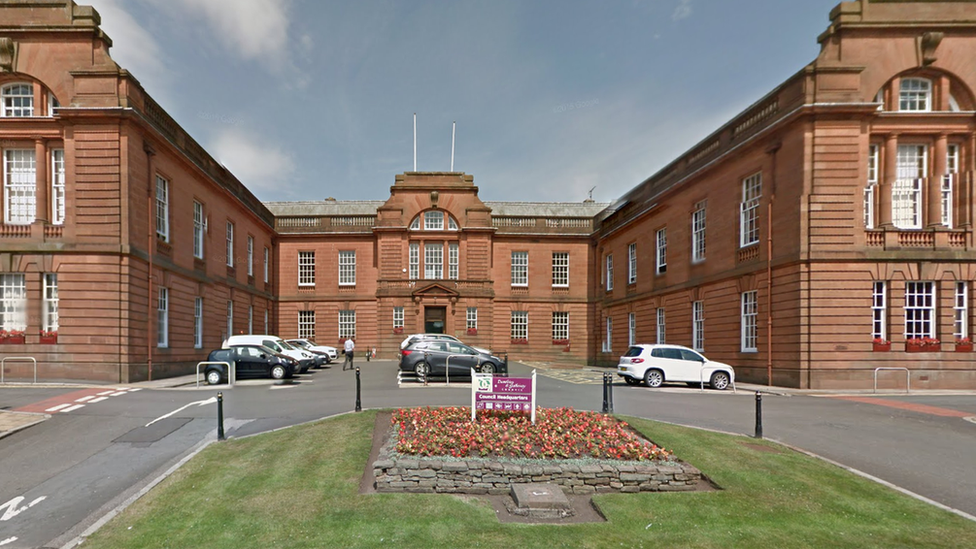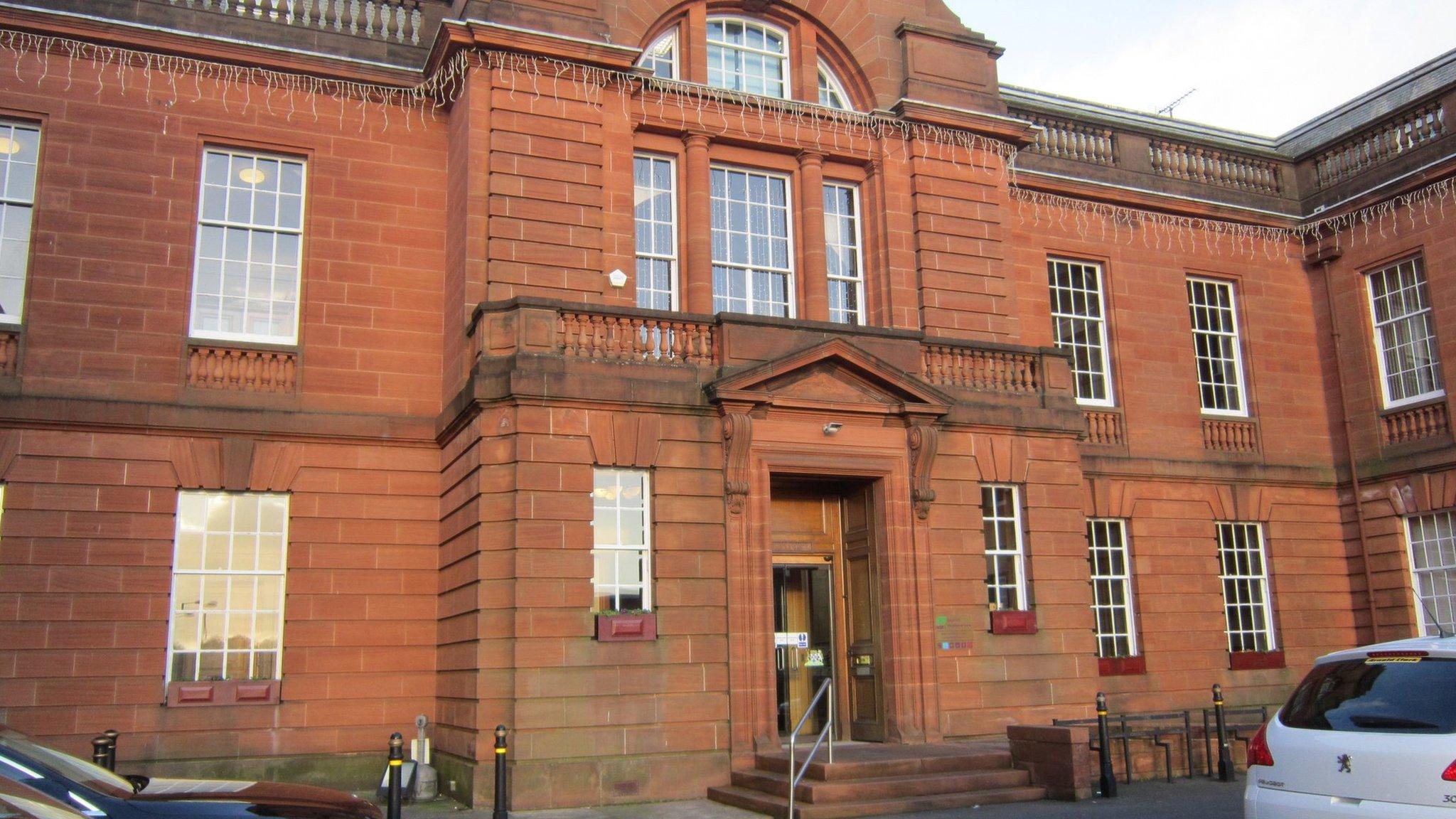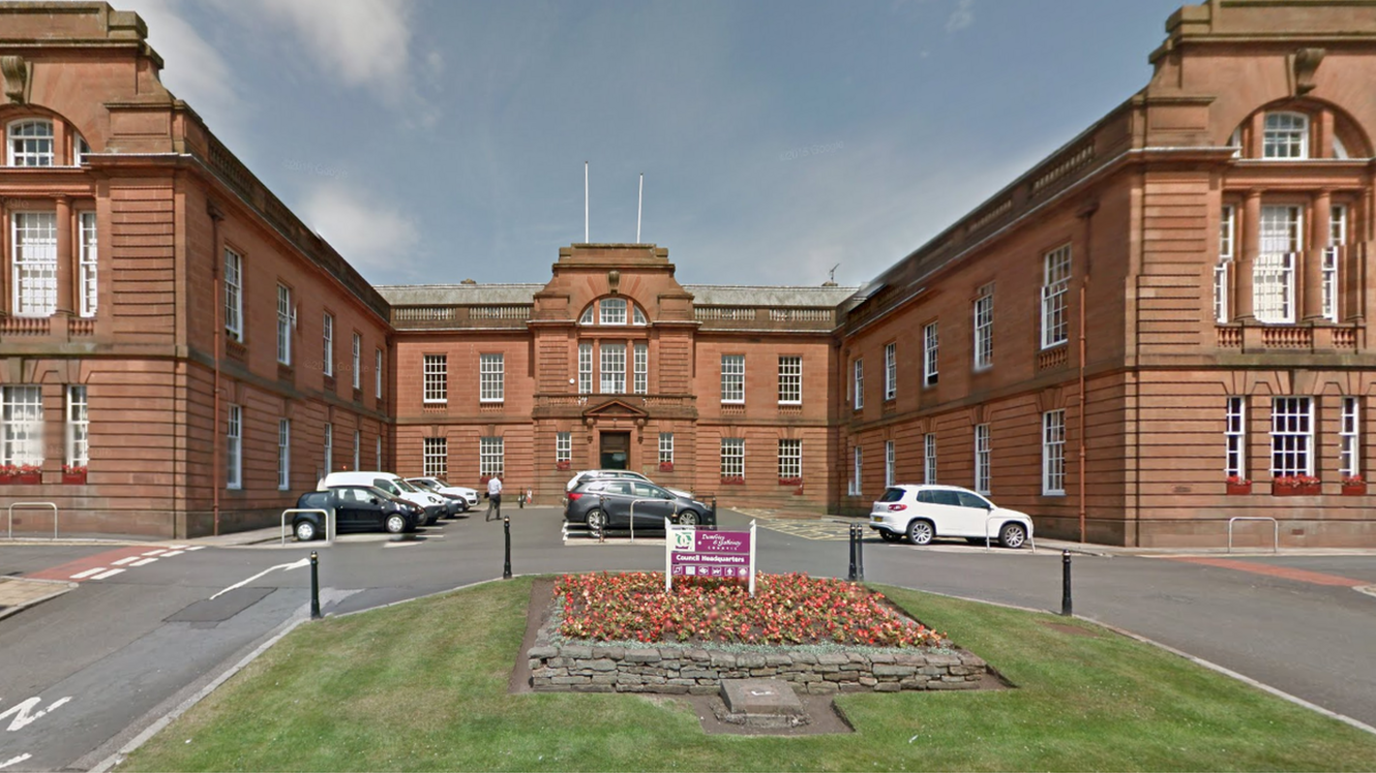Dumfries and Galloway Council agrees 3% tax increase
- Published

Labour-led Dumfries and Galloway Council has agreed to a 3% increase in council tax in the region.
Councillors voted 29-16 in favour of the spending plans which will see the money raised by the rise ring-fenced for education.
The Conservative group had also proposed a tax rise but without that stipulation.
The increase will bring in about £1.9m for the council and sees bills for band D properties rise by about £31 a year.
The local authority was one of the last in the country to meet to decide its spending plans.
The ruling group tabled plans for a tax increase with the stipulation that the money be spent on education.
Opposition Conservative councillors also proposed a tax rise but wanted the money raised spent differently.
They said they would employ extra road repair teams, add £50,000 to the campaign to secure the Galloway Viking Hoard for the region and reverse plans for a Whitesands flood scheme.
Councillors voted by about two to one in favour of the administration's proposals.
National increases on homes in bands E to H mean their council tax will rise by more than 3%.
The council has already highlighted that the historically low rates in the region mean it is bringing in about £6m less per year than it would by charging the national average.
Council leader Ronnie Nicholson described it as "another tough budget" with more posts likely to go.
He said that 1,100 jobs had already gone over the last decade.
Among the spending plans contained in the budget are:
£2.5m in anti-poverty initiatives
£2m extra investment in roads
a £3.8m increase in the education budget, including an extra £400,000 for additional learning support assistants
a £1m town centre living fund to bring empty properties back into use for housing
£500,000 to create inclusive play areas - play parks fully accessible for disabled children
The administration has also made the full details of its budget plans available to view in one document., external
- Published22 February 2017

- Published22 February 2017
